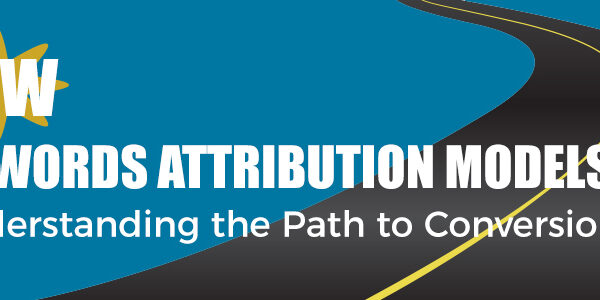The path to conversions is never as straightforward as we’d hope. In an ideal advertising world, someone would search for a particular keyword, click your ad, and purchase your product or service. But unfortunately, it’s not so linear.
More realistic conversions happen after multiple visits and after multiple keywords have been used to narrow down the search intent to exactly what the customer needs. This behavior is very natural, considering that as people shop they become more informed, and hence have a better understanding of what they need and are looking for.
AdWords’ Attribution Models can show you how much impact various keywords have on conversions in your marketing funnel. These models allow advertisers the opportunity to attribute credit to the first click, last click, or a combination of multiple clicks.
Types of Attribution Models
Last click
The last click attribution model is the standard default that advertisers use in measuring conversions. This model uses the last keyword before the conversion. For example, let’s say someone’s search process looks like this:
 Using the last click model, 100% of the credit towards a conversion would be on the iPhone 7 5.5 inch keyword.
Using the last click model, 100% of the credit towards a conversion would be on the iPhone 7 5.5 inch keyword.
First click
Advertisers sometimes use the first click model to gauge interest in their company. Any attribution to these keywords could be used to see how valuable keywords are, that would not normally be counted as a conversion.
 Using our example above, Smartphone would get 100% of the credit towards a conversion. In this particular scenario, leveraging the first click attribution model probably doesn’t make sense as the search process starts out very broad and progressively gets narrower.
Using our example above, Smartphone would get 100% of the credit towards a conversion. In this particular scenario, leveraging the first click attribution model probably doesn’t make sense as the search process starts out very broad and progressively gets narrower.
Linear
This model distributes credit evenly to all keywords that took part in the conversion. Each keyword in our example would receive 25% of the credit towards a conversion.
 Can you see why this model may not be ideal for most advertisers? How would you be able to optimize your ads and website copy for specific keywords if all of them carry the same conversion weight?
Can you see why this model may not be ideal for most advertisers? How would you be able to optimize your ads and website copy for specific keywords if all of them carry the same conversion weight?
Time decay
The time decay model works similar to the linear model, but gives more credit to clicks that happened closer in time to the conversion. Credit is distributed using a 7-day half-life. This means that a click 1 day before a conversion gets 2x more credit than a click 8 days before a conversion.
 Position-based
Position-based
The position-based attribution model gives 40% of credit to the first and last click and keyword and the remainder is distributed among the remaining clicks/keywords. This assumes that there is more intrinsic value on the first and last keywords, as initial interest and final conversion seem to have more impact on the entire campaign. This model indicates that the in-between keywords have some weight on the conversion but are not the most impactful.

*NEW!* Data-driven
This model distributes credit based on how your customers typically convert on your website. Note that this model is only available to accounts with enough data. The data-driven model looks at how your campaigns, ads, and keywords contribute to achieving your business goals. How do you know if you’re eligible to use the data-driven attribution model? Your account must have at least 20,000 clicks and a conversion action must have at least 800 conversions within 30 days.
What are the Benefits of Using Attribution Models?
Better Understand Your Customers
Once you can identify which keywords are responsible for driving conversions, you can get a better understanding of your buyers and their behavior towards purchasing from you. With this insight, you can update your copy with those keywords to improve your Quality Score (and organic rank!), optimize your content and even your email marketing efforts.
Bid Optimization
Understanding which keywords assisted in generating a conversion will allow you to better set and optimize your bids. If you’re using an automated bid strategy that optimizes for conversions, the attribution model you select will affect how your bids are optimized.
Which Attribution Model Should You Use?
There’s no straightforward answer to which model your business should use; it depends on the your industry, campaigns, goals, and many other factors.
While we’re still gauging the effectiveness of the new data-driven model, we typically like to peek at the time decay model. It gives the keyword closest to the conversion majority of credit and the keyword farthest away from the conversion the least amount of credit. This model represents the keyword closest to the conversion as the most important keyword, but still gives credit to all keywords leading up to the conversion. It still leverages the tried and true default last click model, but accounts for the other keywords along the conversion path as well. The time decay model often shows you how the customer’s search query intent becomes more targeted as it get closer to the final conversion.
To learn how to change the attribution model in your account, use these instructions. But before you start testing out different attribution models, talk to a paid advertisement expert to discuss the option that’s best for your business.







